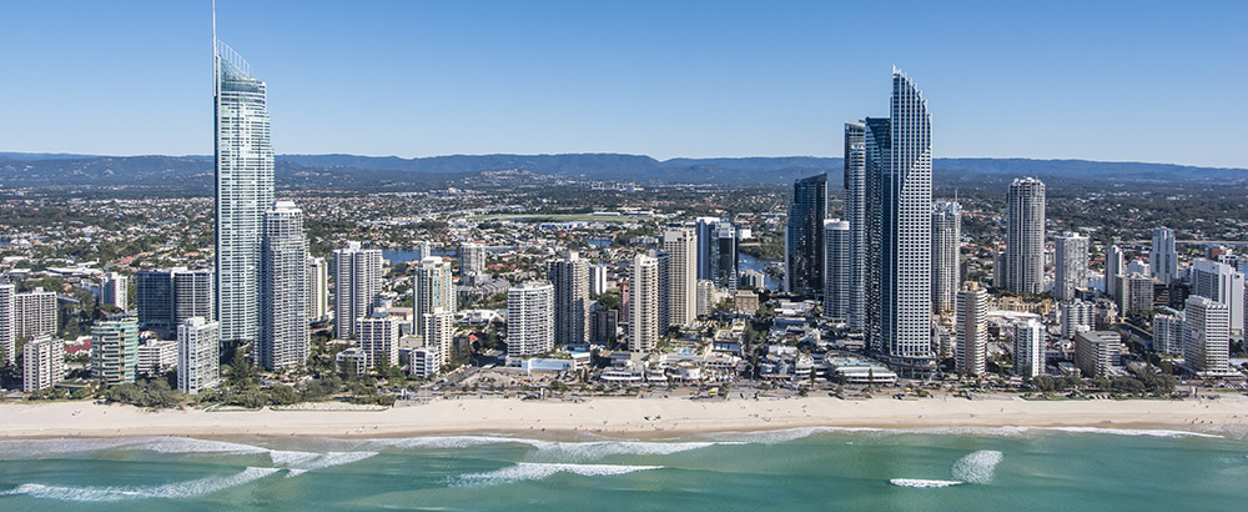- 18 Jan 2021
- By The REIQ
Brisbane rentals bounce back, Gold Coast hits record lows and 90% regional vacancies tighten further
As Queensland's residential property market continues its upward trajectory into the New Year, the Real Estate Institute of Queensland's (REIQ) latest vacancy data for the December 2020 quarter shows Brisbane's inner city rental market is firmly making a comeback. In fact, in the six months to December 2020, rental vacancies skyrocketed to almost 5% in Brisbane CBD's June Quarter. Half a year later and rental vacancies are placed at 3.3%, making it currently the only healthy rental market in Queensland.
“While it's extremely pleasing to see vacancy levels improve within the CBD, the market has yet to fully rebound. The capital was severely hit by COVID-19, particularly when businesses were forced into lockdown,” explains Antonia Mercorella, CEO of the REIQ. “Despite the tapering of Federal Government support such as JobKeeper, with business confidence reaching pre-COVID-19 levels, Brisbane CBD has seen around 5% rental share reclaimed off the back of the pandemic.”
Beyond Brisbane's CBD, rental vacancies around the city's middle ring remain extremely tight, with a quarterly rate of 1.6% including Hawthorne (1.4%), New Farm (1.9%), Paddington (2.1%) and St Lucia (1.7%). Further out into Brisbane's outer ring and vacancies are even tighter, recording a quarterly rate of 1.3%. In fact, every area within the outer region is currently presenting less than 2% stock availability including Ashgrove (1.6%), Camp Hill (1.3%), Cannon Hill (1.4%), Hamilton (1.9%), Holland Park (1.2%) and Moorooka (1.3%).
“In the last six months we've witnessed some record lows across capital city suburbs; figures we've certainly not seen for well over a decade,” adds Ms. Mercorella. “It's a similar scenario as you travel around the wider regions of Brisbane including Ipswich, Logan, Morton Bay and Redlands which all have uncomfortably low stock levels around 1%.”
Across the State's regional areas, Cairns (1.2%), Cassowary Coast (1.1%), Isaac (1.2%), Mareeba (1.5%) and the Whitsundays (1.4%) saw vacancies rise above 1%. However, for the remaining 90% of regional Queensland, rental vacancies have plunged further to record an all-time median low of 0.575%. This includes areas such as Bundaberg (0.4%), Fraser Coast (0.6%), Hervey Bay (0.9%), Mackay (0.7%), Toowoomba (0.7%) and Townsville (0.7%). Rockhampton recorded the lowest rental vacancies for the December 2020 quarter at 0.2%.
“During the pandemic, the Palaszczuk Government introduced a range of measures keeping tenants in place for longer which is part of the reason we have incredibly low rental availability across Queensland,” says Ms. Mercorella. “We have also seen a significant amount of interstate migration, with renters also moving to Queensland, so all of these factors have contributed to our current tight vacancy rates.”
The two most popular destinations for interstate migration still remain the Sunshine Coast and Gold Coast respectively. Citing liveability, affordability and lifestyle along with economic opportunities, education and an inclusive society, the Sunshine Coast may be drawing big crowds but its rental market hasn't shifted in months, firmly gripped at 0.3%. Many areas such as Buddina (0.3%), Caloundra (0.3%), Maroochydore (0.5%), Noosa (0.4%) and Sunrise Beach (0.5%) have continued to tighten marginally over the last three months.
The Gold Coast isn't far behind, with rentals being snapped up across all regions. Surfers Paradise, which recorded more than 2,100 vacant rentals at the peak of the pandemic nine months ago, currently has 0.7% stock availability. In fact, its rental market has rebounded beyond pre-COVID levels to reach a record low never before recorded.
What's more, record low vacancies have also been reported across the entire Gold Coast. In the north, which has a median vacancy of 0.6%, stocks have reached all-time lows in areas such as Arundel (0.6%), Labrador (0.7%), Oxenford (0.1%), Runaway Bay (0.5%) and Southport (0.7%). It's the same story in the south, with a median vacancy of 0.3% across suburbs including Broadbeach (0.8%), Currumbin (0.3%), Miami (0.2%), Palm Beach (0.3%) and Varsity Lakes (0.6%).
“What we're seeing is an unprecedented level of diminishing rental availability that's placing significant pressure on our State's housing sector – so much so that it's unsustainable and why urgent action is required to better support both increased and ongoing property investor activity in the Queensland property market and the contributions they make to the state economy,” explains Ms. Mercorella.
“Every Queenslander should have access to a safe, secure and affordable home that meets their needs and supports them. That's why the Palaszczuk Government should consider abolishing stamp duty. It's the most significant barrier to homeownership, discouraging housing turnover, restricting mobility and property investment – something we desperately require.”
-ENDS-
*The REIQ calculates the vacancy rates for the largest governmental areas and regions in Queensland. The calculation is based upon all residential rentals as at the end of each quarter period, as submitted by real estate agents. The REIQ classes rental markets into three categories: weak, healthy, and tight. These rental markets are classified according to their vacancy rates: 0-2.5% = tight; 2.5-3.5% = healthy; and, 3.5% and above = weak.
Download this media release as a PDF
For media enquiries or to request an interview with REIQ CEO Antonia Mercorella, please give Olivier Björksäter-Bleylock a call on 0417 623 723 or email objorksater@reiq.com.au
You might also like
View All Articles
View All Articles


Start your Real Estate Career
Need help? 1300 697 347 or contact us




